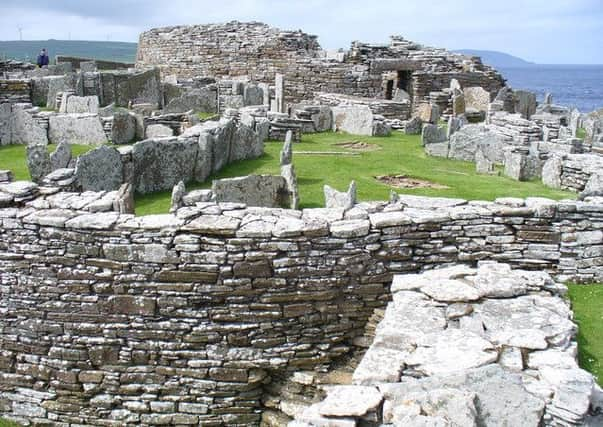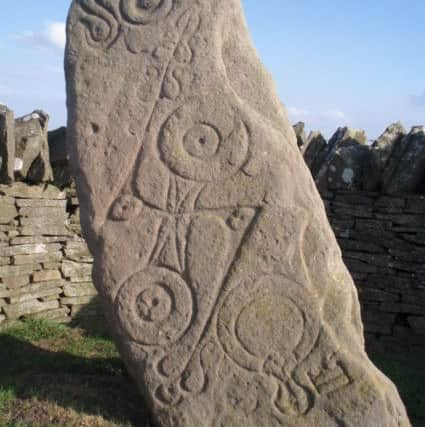A brief history of the ancient Pict Kingdoms of Scotland


Research into the genetic origins of Scots found that that 10 per cent of Scottish men are directly descended from the Picts.
Speaking in 2013, Dr Jim Wilson, a senior lecturer in population and disease genetics at the University of Edinburgh, said:
Advertisement
Hide AdAdvertisement
Hide Ad“As you go up your family tree there are all sorts of paths.


“But if we can see that about 10 per cent of fatherlines look to have a Pictish origin, then we can make the prediction that probably a lot of the other lines do.”
Yet mystery has long surrounded the fate of the tribe of fierce enigmatic people who battled with Rome’s legions before seeming to disappear leaving behind a rich history.
The Picts were some of the first settlers in Scotland, myths tell of their descent from the Celtic goddess Brighid, their lineage passed down from the female line.
Kenneth I - the first King of Scotland - was descended from this line, his mother being one of the Pictish Queens.


Brighid was a Celtic Goddess, from the Tuath de Danaan, which legend says were an ancient fairy race of Ireland. The first King’s wife - although never named - is said to be a direct descendant, as are all the subsequent royals, right down to Queen Elizabeth II.
Even the name “Britain” is derived from Brigihd, named for the people who worshipped her, the Brigantes.
Advertisement
Hide AdAdvertisement
Hide AdBut very little is known of the beginnings of these ancient northern kingdoms - the first record consisting of just a list of kings, dating back to 312.
The kings were named in the Pictish Chronicle, thought to be dated from King Kenneth II of Scotland, who ruled Scotland from 971 until 995.


The first recorded King of the Picts was Vipoig, who reigned from 312–342.
Not much is recorded about these early kings, other than that they held off attacks from both the Romans and Angles, living in their own separate community about the Firth of Forth.
The Angles were ruled by King Oswiu in 642, and were rapidly expanding north, taking the River Forth and heading up towards the River Tay.


King Oswiu acted as an overlord, demanding the subordination of the Britons, Gaels and now the Picts. When he passed away, a new Northumberian king was chosen - Ecgfrith, in 664 - and he wasted no time in setting out to crush the Picts, slaughtering an entire colony near Grangemouth.
According to Northumberland reports, so many Picts were slaughtered that it was possible to walk across the River Carron without getting your feet wet.
Advertisement
Hide AdAdvertisement
Hide AdThe Pictish King Bridei lead the Picts in retaliation for the massacre at Grangemouth.
As the Angles advanced on the Pictish fortress of Dunnottar, Bridei set his trap. The Battle records of Dun Nechtain against the northern Angles station in Northumbria were so well preserved, that we know it was fought on Saturday March 2, 685 at 3pm.
The Angles spotted a Pictish warband and set of in fast pursuit, climbing down over Dunnichen Hill. They found themselves surrounded, the main body of the army lying in wait, trapping the Angles with the Loch behind them, where all met their fate.
After that moment, the Picts and Gaels were freed from the overlords, the Angles never recovering their hold on Scotland.


When Kenneth I rose to power in 843, he wanted to conquer the Picts, their armies having murdered his father in battle.
The story goes that in 848, Kenneth invited the Pictish King Drust IX and the remaining Pictish nobles to Scone, under the pretense of peace negotiations.
While the Pictish men were at dinner, the Gaels released the bolts from their benches causing them to fall into hidden spike filled pits below, wiping out an almost millennium old lineage.
Advertisement
Hide AdAdvertisement
Hide AdKenneth McAlpine went on to claim the remaining Picts and northern Scottish lands for himself, and in the process became the first King of Scotland.
Within a few generations, the Pictish language was forgotten, the Pictish Church taken over by the Scottish Colombian Church and most artifacts of Pictish culture erased.
